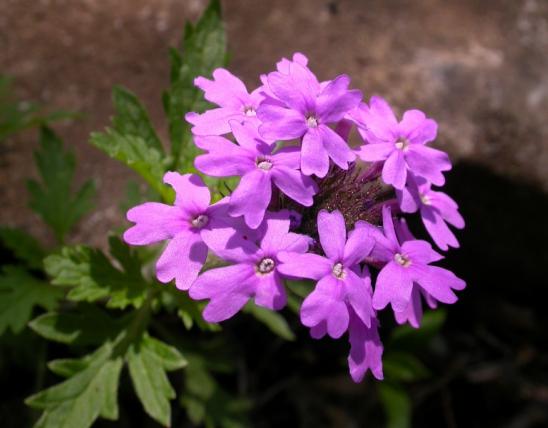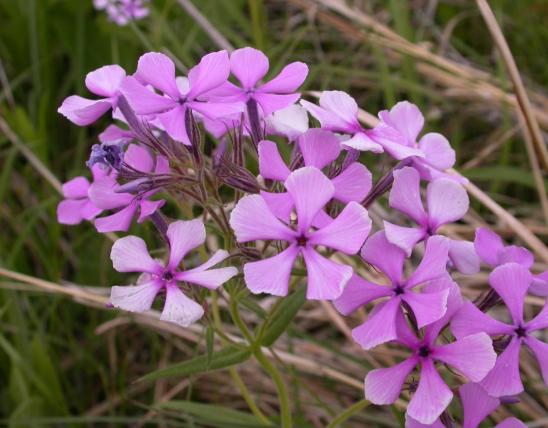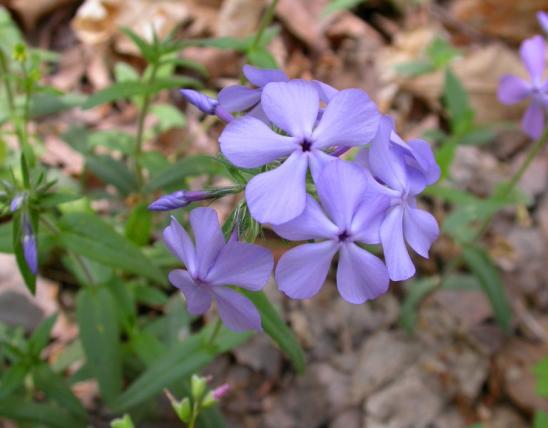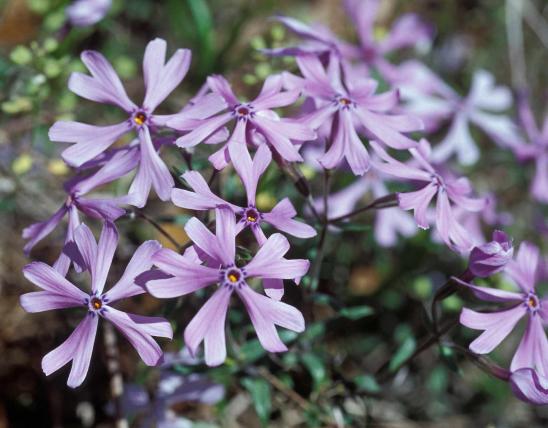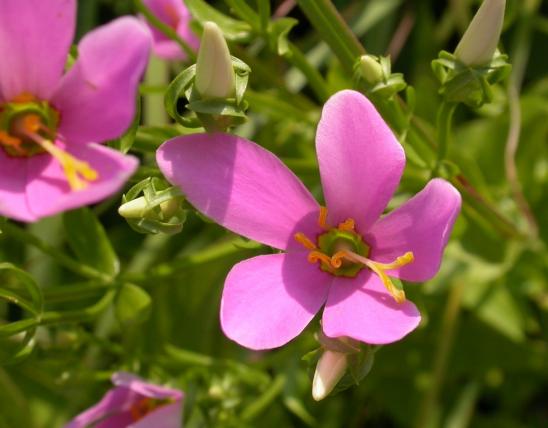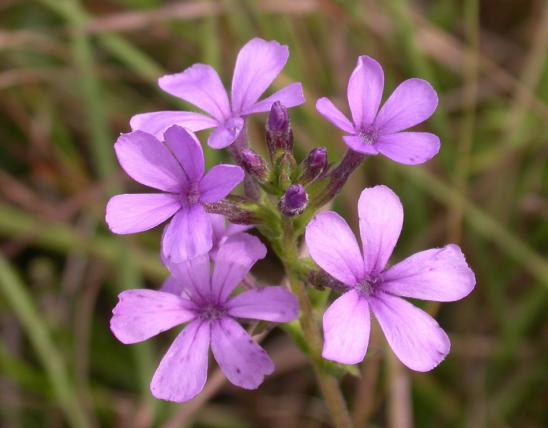
Perennial phlox is a tall, late-blooming perennial phlox with big, showy, fragrant clusters of flowers. The flowers are in dense, pyramidal, terminal clusters in many shades of purple, red-purple, rose, and rarely white. Cultivated forms come in many different colors and color patterns. The individual flowers have the typical phlox shape, with a narrow tube that flares out with 5 flat petal lobes. Blooms July–October. Leaves opposite, sessile (stalkless), oblong to lance-shaped, prominently veined, and spaced apart on stems.
There are many horticultural cultivars in a great variety of colors that are found at garden centers and in home landscaping. This phlox is an old-fashioned favorite, and some of the cultivated varieties can be found growing untended at old homesites.
Similar species: Nine species of Phlox have been recorded for Missouri. One that is quite similar is meadow phlox (P. maculata), which can begin blooming as early as May, earlier than perennial phlox. Its leaves are different, too: narrower, with less noticeable veins, apart from the midvein.
Height: 2–4 feet.

Scattered south of the Missouri River and in the northeastern quarter of the state. Cultivated statewide.
Habitat and Conservation
Occurs in bottomland forests, moist upland forests, banks of streams and rivers and along gravel bars, bases of bluffs, and fens; also on roadsides and shaded, disturbed areas.
Because it has been a favorite garden plant for so many years, and many cultivars have been developed, many “natural” occurrences of this plant might actually be remnant populations of garden plants. Look around for old foundations, cisterns, and other cultivated perennials and trees to see if you’re at an old homesite.
The wild forms of this species usually inhabit shaded sites, but horticultural varieties often tolerate full sunlight.
Status
Perennial native wildflower. A commonly cultivated species. Some Missouri populations no doubt arose as escapes from gardens. Many cultivars have been developed.
Human Connections
An old-fashioned garden favorite that your grandmother might have grown, perennial phlox bears big, colorful clusters of flowers starting in midsummer and continuing to bloom for a long time. Most people use it as a perennial border flower.
Another bonus for the gardener is that hummingbirds are attracted to the flowers.
Some cultivars have problems with powdery mildew on the leaves, phlox bugs, and root rot, but native strains are more hardy. Check into disease resistance before purchasing.
Ecosystem Connections
A variety of butterflies, skippers, and moths, including the hummingbird-like sphinx moths, visit the flowers. Perennial phlox is especially attractive to the cloudless sulphur, a large, clear-yellow butterfly that migrates southeast in late summer and fall.
This phlox is also a late-summer nectar source for hummingbirds as they are gaining strength for their fall migration south.
Herbivorous mammals and insects chew the foliage.
Several types of insects also eat the leaves or suck the sap.

































